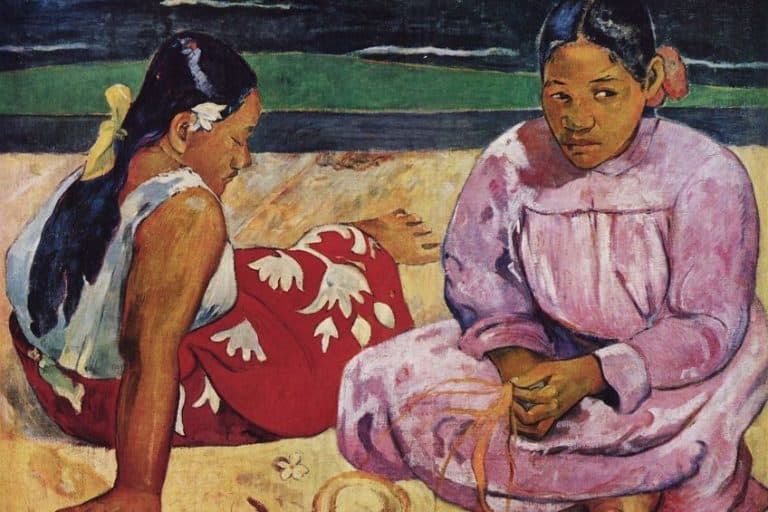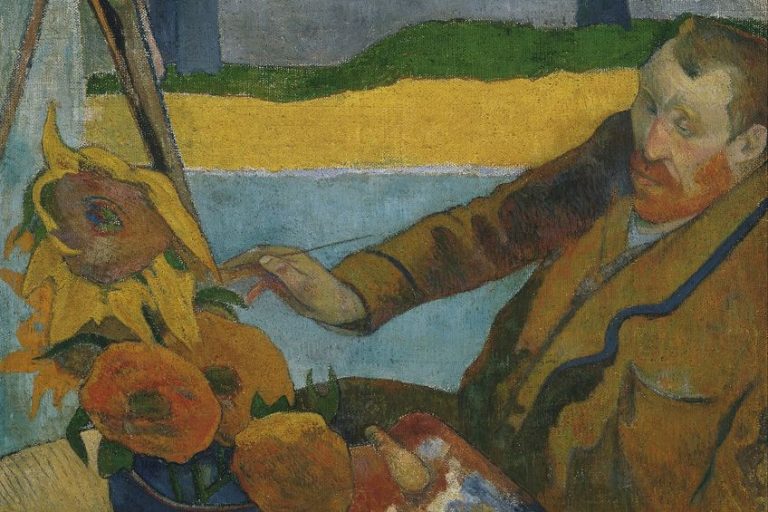German Expressionism – One of the Greatest German Art Movements
German Expressionism, originating in Germany prior to the First World War, existed as an early 20th Century art movement that reached its peak in Berlin during 1920. This movement held its influence through depicting reality after the traumatic effects of World War One. While this can generally be considered a pre-war movement, pieces that were part of the movement found their way back into some art circles after the war ended.
An Introduction to German Expressionism Art
German Expressionism can be difficult to define, as it existed as a cultural movement that sought to rebel against traditional bourgeois art that commanded culture and aesthetics within Germany. Thus, art within this movement was not easily distinguished by a singular style or method.
In seeking a definition, the movement can be broadly defined as one that rejected all Western conventions previously associated with the production of traditional art.
Prior to the start of World War One, expressionist art in Germany typically emulated the Parisian Fauvist Movement. However, artists began to feel a sense of frustration over the state-sponsored art education they were exposed to and sought to challenge these ideals. These developments attempted to bring about change in economics, politics, music, architecture, dance, sculpture, literature, and cinema in addition to painting.
At first, German Expression was only considered an art movement, but it encompassed poets, novelists and playwrights in addition to artists. In 1905, a small group of artists broke away and begun to produce vivid paintings that made use of gestural brushstrokes, bright and juxtaposing colors and extremely distorted figures.
German Expressionist art depicted the subjective feelings of the artists about the disillusion they saw in society as the promise of war loomed. As a result, artworks were profoundly emotive, unrestrained and shocking, as they attempted to convey ideas over the type of reality that was being experienced.

As war broke out, German Expressionism became a bitter protest movement in addition to a new and modern art style. The movement was led by the younger generation of artists, writers, and thinkers, and was initially confined to Germany due to the country’s isolation throughout World War One. Any creative that sought to dismantle the artistic thought of traditional society belonged, as this movement was borne out of a need to challenge the social conservatism that existed.
German Expressionism art became so much more than simply creating art that told a story, as works incorporated political, social, and cultural aspects. The relationship between art and society was explored, with works being understood as vessels of change that depicted the transitional nature of German culture in the midst of chaos. In its entirety, German Expressionism was indeed fleeting, and its extreme anti-realism began to dwindle after a few years as artists and writers aged.
Despite its downfall, the importance of German Expressionism art was that it encouraged various European cultures of the 1920s to embrace the concept of change and to boldly experiment with unfamiliar artistic styles and ideas.
Thus, German Expressionism can be linked to various other contemporary movements who all shared the same goal of dismantling traditional society.
The concept of Expressionism continued to live on in other artists and through the development of other art movements. Due to it being such a groundbreaking movement at the time, modern Expressionism gave way to the creation of Abstract Expressionism and the production of avant-garde art.
German Expressionism Characteristics and Style
German Expressionism art took inspiration from artists such as Edvard Munch, El Greco, and Vincent van Gogh. Artists were less concerned with producing work that held aesthetic value and instead focused on creating compositions that had the ability to emit powerful reactions when viewed. This was done by combining jagged brush marks, incongruous colors, and simplistic shapes, which were all authentic German Expressionism characteristics. Thus, the style created went against what was considered traditional art.

Two distinct groups of German Expressionism arose, each led by different artists. The first was known as Die Brücke, guided by Ernst Ludwig Kirchner, and the second was Der Blaue Reiter, led by Franz Marc and Wassily Kandinsky. Both groups produced artwork that was intensified by the emotions they were experiencing and prompted by their subconscious thoughts. After both groups dissolved, a third group called Die Neue Sachlichkeit developed, with their artwork responding to the post-war Realism trend that was developing throughout Germany.
Their artistic style focused on creating works that were more simplified and abstract, with figures being depicted from a flattened perspective so as not to be immediately recognizable. The distortion of forms became overwhelming within their artworks as they were depicted through a vibrant and juxtaposed lens.
Eventually, these German Expressionism characteristics would go on to set the scene for the development of mid-century Abstraction.
Die Brücke
Formed by a group of artists originating in Dresden in 1905, Die Brücke began as the birthplace of German Expressionism. The co-founders of this movement, alongside Ernst Ludwig Kirchner, were Karl Schmidt-Rottluff, Erich Heckel, and Fritz Bleyl. Other notable artists included Otto Mueller, Max Pechstein, and Emil Nolde.
Brücke means “bridge”, which may have been deliberately chosen to imply the idea of a bridge existing between the artists and the bourgeois society. It was also thought that this name was chosen due to the fact that the group recruited members who were merely supporters as opposed to artists, with the idea of a bridge possibly existing between these two parties. Members were made to pay a subscription fee, which gave them access to an annual collection of print works.
The artists within this group helped establish the extreme anti-traditional style that became synonymous with the movement. Artwork belonging to this group could be identified by the emotional tension that came to mind when viewing, and by the evocative, unnatural colors that were used to represent a scene. Die Brücke artworks made use of finger painting, contemporary urban scenes, and landscapes to depict radical social views. Color palettes were lurid, with striking outlines being used to create blunt compositions.

According to their manifesto of 1906, members of Die Brücke stated that their aim was to bring about complete freedom of life and action against the fixed, traditional forces that dictated society. In terms of art that was created, this sought-after freedom encouraged artists to merge elements of traditional German art with African and South Pacific tribal art and motifs. Additionally, artists used stylistic elements belonging to Post-Impressionism and Fauvism to produce a distinctly new and modern Expressionism style.
Members of Die Brücke also pursued a return to a more sincere relationship with nature. The separation that existed between man and nature could be viewed as another possible bridge that artists wanted to address and overcome, further validating the use of the word “bridge” within their name. This desire to return to nature can be seen and felt in the images of their bare selves soaking in the lakes near Dresden.
The meaning of the bridge within Die Brücke ties in with this desire to return to something that has been forgotten or pushed aside. The hope was that, through their artworks, a path would be created that led individuals away from the past and into a future where true freedom of life was experienced.
Die Brücke was in existence until 1913, whereafter the group disbanded. Consequently, most of the work created went on to be ridiculed by the Nazi regime in the time leading up to the start of the Second World War.
Der Blaue Reiter
In 1909, several years after the formation of Die Brücke, the expressionist group known as Der Blaue Reiter was first established in Munich. Unlike the previous movement, which was much more structured, Der Blaue Reiter was an informal group.
A group of innovative and experimental artists who were all living in Munich at the time went on to establish the Neue Künstler Vereiningung, which became known as the New Artist Association (N.K.V.). However, in 1911, Russian artist Wassily Kandinsky and German artist Franz Marc broke away from the N.K.V. and began to exhibit their art under the name of Der Blaue Reiter. They were the two most prominent founders of the movement and were joined by Gabriel Münter, Paul Klee, August Macke, and Marianne von Werefkin.
In 1912, Kandinsky and Marc went on to release a collection of essays on art, which became known as the Almanach Der Blaue Reiter. The aim of this was to introduce some spiritual value to art pieces, with color being used as their main technique. The translation of the name into English means “The Blue Rider”, which held significance for both Kandinsky and Marc.

The “rider” makes reference to Marc’s preoccupation with horses, as he believed that animals had an innocence that made them superior to human beings. The inclusion of animals could also be symbolic of one turning their focus back to nature. This translation then ties into the work of Kandinsky, who demonstrated a fascination towards riders on horseback, as they were believed to represent freedom, pleasure, and power.
Similar to Die Brücke, the combination of both an animal and human motif is thought to symbolize the importance of one’s connection with nature. Additionally, the color blue may have had added significance for Kandinsky, who was believed to possess the ability to both see and hear colors.
Due to the informal nature of the group, the movement soon collapsed. By the end of the First World War, both Macke and Marc were killed, which signified the official end of Der Blaue Reiter.
Die Neue Sachlichkeit
The third group within the German Expressionism art movement was known as Die Neue Sachlichkeit, which translated to “The New Objectivity”. Formed in the 1920s, this group became part of the post-war German Realism trend that was developing. The chief artists within this movement were Otto Dix, George Grosz, Käthe Kollwitz, and Max Beckmann.
Themes seen within artworks gave scathing depictions of the luxury and corruption present in Germany, which was thought to ridicule the human condition. Additionally, political themes that focused on the atrocity of World War One and their psychological effects on German individuals became common. This could be seen through the hopeless and crude forms that were present in these artworks, which were often painted in black and white to further emphasize the despondency within the subject matter.
When the Nazis came to power in 1933, this movement was brought to a close as the artworks were condemned. Most of the great leaders of this group were subsequently exiled and were not allowed to reproduce work of this nature. However, the fascination surrounding this movement ended up increasing due to traveling exhibitions that were put on to campaign for their work.
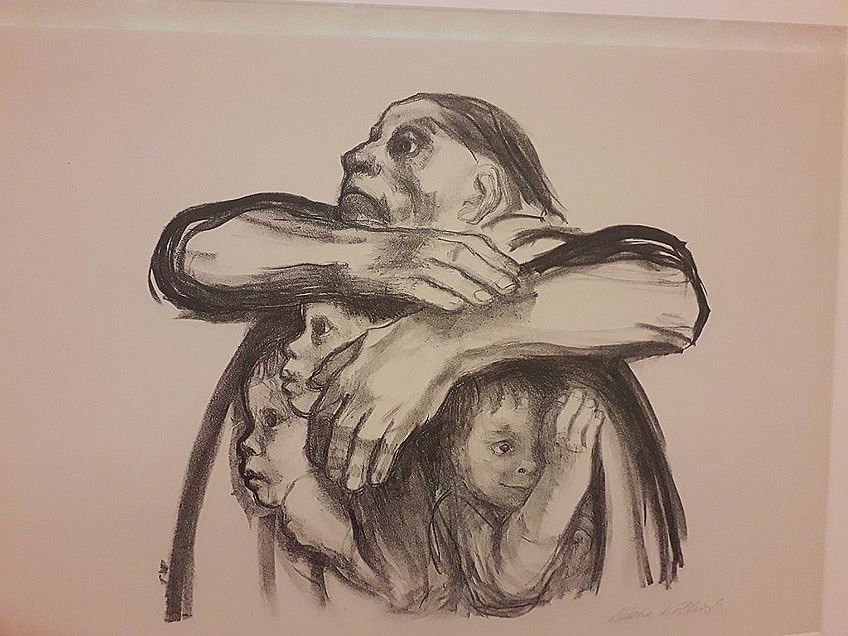
Other Well-Known German Art Movements
Despite German Expressionism being the one of most distinguished art movements to come out of Germany, a variety of other German art movements existed in addition to it. However, between the start of the 20th century and 1945, Germany experienced two world wars and underwent plenty of technological and cultural changes.
Due to this, it can be difficult to separate each art movement individually, as a lot of overlapping exists. The majority of the artists who helped pave the way for German Expressionism were members of multiple groups.
An important art movement that dominated experimental European art, and more specifically German art, throughout the 1920s and 1930s was the Bauhaus art movement. The name, which translates to “Construction House”, was founded by Walter Gropius in the early 20th Century. Defined by its unique approach to architecture and design, Bauhaus developed into its own modern art movement.
In 1919, Gropius founded Staatliches Bauhaus, which was a school dedicated to bringing all the different branches of art together under one roof. The school became a center for Europe’s most experimental creatives to come and teach, with one teacher being none other than Der Blaue Reiter’s Wassily Kandinsky.
Similar to the abstraction showcased in the German Expressionism paintings done by Kandinsky, the style of the Bauhaus movement displayed the balance and unity that Kandinsky managed to create in his absurd artworks.
The Bauhaus movement came to a close in 1933, yet its influence, much like German Expressionism, lingered. The movement placed focus on juxtaposing abstract shapes with balanced forms, and its influence can be seen in the modern architecture that we are surrounded by today.
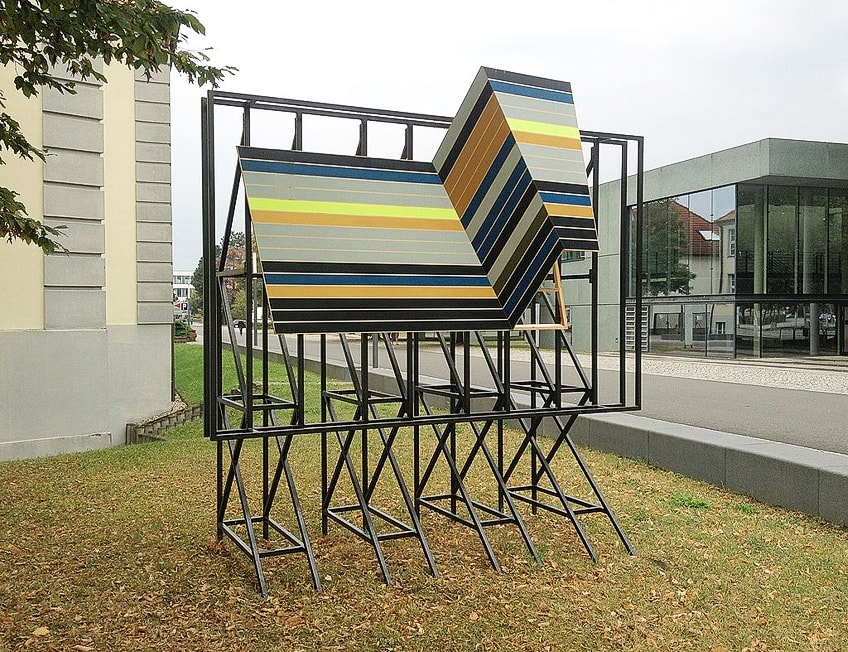
German Expressionism Film
Another important form of art that came about during the era of German Expressionism was German Expressionist Cinema. German Expressionism was one of the first artistic genres to have a great impact on the development of filmmaking. This early artistic style of cinema has been credited with enabling the development of numerous avant-garde styles that have occurred since.
At first, these films were produced as a result of the isolation Germany suffered during the 1910s. Soon after they appeared, high demand for them began to generate and when the government put a ban on all foreign films, their appeal only increased. This appeal quickly reached an international audience and by the early 1920s, numerous European filmmakers had started to play around with the ridiculous and wild techniques that encompassed German cinema.
German Expressionist Cinema is perhaps one of the most identifiable styles of cinema. Taking inspiration from Expressionist paintings, these films attempted to present their subjects through their personal and subjective experience.
In cinema, this was created through the use of high angles, deep shadows, impossible sets, and extreme camera tilting.
After witnessing the horrors of war and experiencing the economic devastation it caused, German Expressionist cinema began to flourish. A number of influential films were made during this time; however, the two most prominent films were The Cabinet of Dr. Caligari, directed by Robert Wiene, and Metropolis, directed by Fritz Lang.
The Cabinet of Dr. Caligari
Released in 1920, this film was directed by Robert Wiene and went on to become one of the most iconic films of all time. The movie follows the character of Francis, who tries to solve a string of murders that he believes to be committed by Dr. Caligari, an insane carnival hypnotist, and his sleepwalking sidekick, Cesare.
The Cabinet of Dr. Caligari is known for the skewed, anxiety-provoking angles that made up its painted backdrops, as well as its hauntingly gruesome storyline. Wiene hired Expressionist painters Hermann Warm and Walter Reimann to create the sets used in the background. The two artists wanted to challenge the formal techniques associated with Modernism and went on to use perception, absurd patterns, and rough lines to create a macabre world.
This film can be viewed as representing the absurdity displayed in the war, as Cesare is symbolic of the innocent soldiers who were forced to kill others under the control of the government, represented by Dr. Caligari. Thus, German Expressionism existed as the appropriate movement to help employ the sense of anxiety and uneasiness that was felt throughout Germany in the aftermath of World War One.
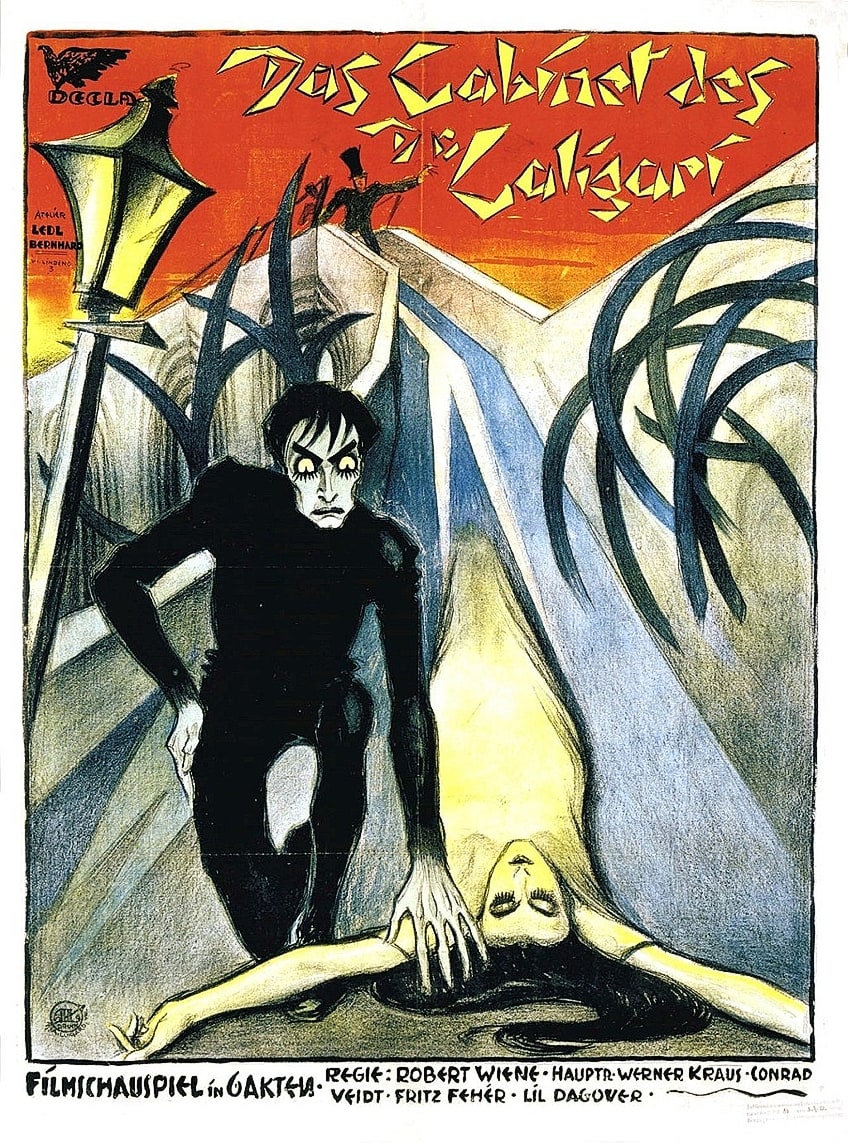
Metropolis
This film existed as another prominent film within German Expressionist Cinema and was directed by Fritz Lang and released in 1927. This is considered one of the most well-known silent films to come out of this era and depicts a society utterly divided by class and wealth. Metropolis tells the story of a dystopian future, where the wealthy ruling class exists in the upper city, and the poor working-class exist below ground.
Similar to the work produced by Die Brücke, this film showcases the chaos and intensity that existed in Germany at the time. Metropolis subscribes to the techniques used within Expressionism through the angular skyline, the overstated movements of the characters, and the sharp contrast between the two worlds. The silence within the film emphasizes the heightened emotion felt, which goes on to motivate the plot.
Disillusionment, isolation, and distrust go on to influence the majority of movies that came out of German Expressionist Cinema. The avant-garde ideas and techniques used have gone on to shape some of the most creative filmmakers of the 20th century, such as Tim Burton, Werner Herzog, and Alfred Hitchcock.
Notable German Expressionist Artists
Numerous artists and creatives contributed to the success of German Expressionism. These Expressionist artists were influenced by the works and stylistic elements of Vincent Van Gogh, Edvard Munch, Henri Matisse, and Ernst Barlach, as well as by the Fauvism and Post-Impressionism movement.

Ernst Ludwig Kirchner
A founder of the Die Brücke group, Ernst Ludwig Kirchner was a German Expressionist painter and printmaker. He helped build the foundation of the Expressionist movement within Germany and in the 20th-century art world through his participation with other creatives coming out of Die Brücke.
He volunteered to join the army during World War One but was later discharged due to a breakdown. In 1933, as the Nazis came into power, his artwork was branded as corrupt, and over 600 of his pieces were either destroyed or sold. Sadly, in 1938, Kirchner committed suicide at the age of 58.
Of his most notable paintings, Kirchner exemplified the rebellious approach that was taken to art by Die Brücke. Favored subject matter were depictions of unrestrained nudes and marginal members of society, such as prostitutes and those who challenged sexual norms. These paintings were done using a vivid and contrasting color palette. This can be seen in his painting titled Red Nudes (1912), which depicts two naked women walking about with ease. Their forms are outlined in blue, which contrasts heavily with the fiery red of their skin, emphasizing the clashing of colors.
Franz Marc
Expressionist artist Franz Marc was a key figure of the German Expressionism movement and a founder of the Der Blaue Reiter group. His art form included painting and printmaking. Marc was drafted to serve in the army at the beginning of World War One and two years later, met an untimely death during the Battle of Verdun. Similar to Kirchner, the Nazis branded him as a degenerate artist in their attempt to destroy the modern Expressionism that was evolving. Luckily, the majority of his artworks survived World War Two, which went on to protect his legacy as a pivotal member of German Expressionism.
The German Expressionism paintings produced by Marc demonstrated his preference for landscapes and often featured cubist-style animals. His color palette typically made use of rich primary colors, as well as bright unrestrained tones. His painting, titled Yellow Cow (1911), demonstrates his style through the angular and abstract cow that is depicted in vibrant primary colors. Additionally, the landscape takes on a cubist form and is painted in contrasting bright and dull tones.

Wassily Kandinsky
Another prominent figure who helped create the Der Blaue Reiter group was painter and art theorist Wassily Kandinsky, a Russian-born artist. While Kandinsky graduated from art school and is generally thought of as the front runner of abstract art, he ended up studying law and economics at university. It was only at the age of 30 years old that he began painting again. He returned to Germany in 1920 and taught at the Bauhaus school of art from 1922 until 1933 when the Nazis closed it down. After his time in Germany, Kandinsky moved to France and eventually passed away at the age of 77.
Kandinsky believed in the ability of artwork to express the abstract realm and saw color as an important element in this pursuit. His artwork, Improvisation 27 (Garden of Love II) (1912), demonstrates his search for this realm through the colors and absurd forms he depicts. He viewed the use of color as having the capability to influence the soul, and often included blue in his German Expressionism paintings, as he believed that it stimulated spirituality.

The Outcome of Traditional German Art
Prior to the development of German Expressionism, traditional German art was influenced by a number of earlier movements. Before the Expression movement began, German artists experimented with styles and techniques found within Romanticism and Naturalism, which led artists to typically depict scenes of nature and the wealthy aristocratic society in their paintings.
Art within this time was thought of as something that held traditional aesthetic value and tended to shy away from including any radical political influences. Through the development of German Expressionism, traditional German art became something that held a deeper meaning and spoke directly to the political and social issues that were plaguing Germany.
However, once the Nazi regime rose to power, Expressionism was labeled as degenerate, as they believed that traditional German art should comply with the norm of classical beauty. Any art that was experimental or innovative in any way was viewed as a threat.
German art has been through so many different movements, that it is truly difficult to say what traditional German art should encompass. Currently, art within Germany is very contemporary, as it makes reference to and demonstrates global influence and diversity.
Frequently Asked Questions
In Which Country Did the Expressionist Movement Originate?
German Expressionism originated in Germany prior to the start of World War One and continued until the distinct groups disbanded and the artworks were banned.
Who Were the Main Groups Within the German Expressionist Movement?
The two main groups were known as Die Brücke and Der Blaue Reiter. After both groups had broken up, Die Neue Sachlichkeit formed.
Which German Films Were Prominent During the Expressionist Movement?
Numerous films were made during the Expressionist movement, but the two most prominent films were The Cabinet of Dr. Caligari, directed by Robert Wiene, and Metropolis, directed by Fritz Lang.
Who Were Notable Artists Involved in the German Expressionism Movement?
Many artists were important figures throughout the development of German Expressionism, however, Ernst Ludwig Kirchner, Franz Marc, and Wassily Kandinsky were instrumental Expressionist artists.
What Additional Art Movements Developed Due to German Expressionism?
A variety of other German Art Movements came about after Expressionism. An important movement that demonstrates some influence by German Expressionism paintings was the Bauhaus movement.
Isabella studied at the University of Cape Town in South Africa and graduated with a Bachelor of Arts majoring in English Literature & Language and Psychology. Throughout her undergraduate years, she took Art History as an additional subject and absolutely loved it. Building on from her art history knowledge that began in high school, art has always been a particular area of fascination for her. From learning about artworks previously unknown to her, or sharpening her existing understanding of specific works, the ability to continue learning within this interesting sphere excites her greatly.
Her focal points of interest in art history encompass profiling specific artists and art movements, as it is these areas where she is able to really dig deep into the rich narrative of the art world. Additionally, she particularly enjoys exploring the different artistic styles of the 20th century, as well as the important impact that female artists have had on the development of art history.
Learn more about Isabella Meyer and the Art in Context Team.
Cite this Article
Isabella, Meyer, “German Expressionism – One of the Greatest German Art Movements.” Art in Context. February 15, 2021. URL: https://artincontext.org/german-expressionism/
Meyer, I. (2021, 15 February). German Expressionism – One of the Greatest German Art Movements. Art in Context. https://artincontext.org/german-expressionism/
Meyer, Isabella. “German Expressionism – One of the Greatest German Art Movements.” Art in Context, February 15, 2021. https://artincontext.org/german-expressionism/.





